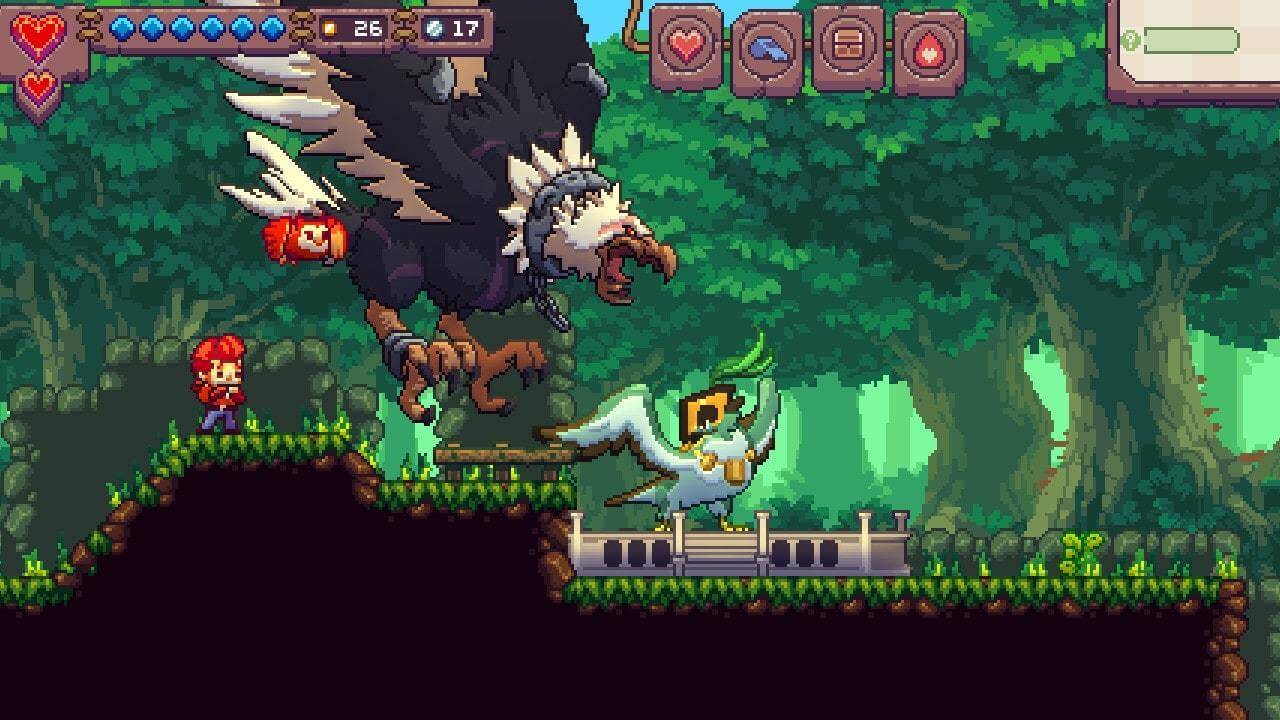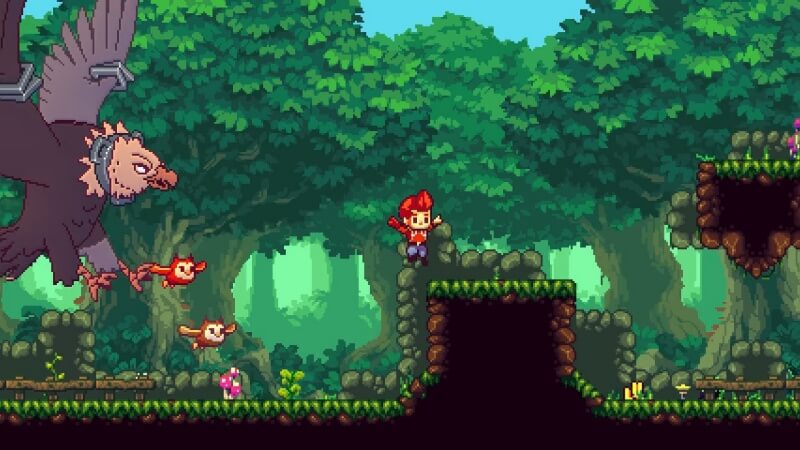Title: Eagle Island
Available on: Switch, Steam
Developer: Pixelnicks
Publisher: Screenwave Media
Genre: Action/Platformer
Version Tested: Switch
Official Site: https://eagleislandgame.com/
Release Date: July 11th, 2019
Where to Buy: Nintendo eShop, Steam
Back in the days of the Super Nintendo and Sega Megadrive/Genesis, games were a lot more difficult than most are today. As a kid, I remember being stuck on games like Vectorman and Donkey Kong Country for weeks at a time. Rogue-lites bring back this intense difficulty, with constant playthroughs of the same levels required to make progress. What may at first be frustrating will turn into a great sense of accomplishment once the area is finished. Eagle Island is an interesting title that follows this formula. Each level is linked together via a Shantae-like hub world which gives the game a purpose and grounds the, admittedly weak, story. So is the rogue-lite/Metroidvania hybrid Eagle Island worth your time and money?
Nice Art and Sound
Eagle Island is presented with crisp pixel art graphics, and there are options to adjust the display, including an old-school CRT option. The graphics are charming and sound is also well done. The main character of this adventure, Quill, starts off with two owls, Ichiro and Koji. At the start of the game, Ichiro is taken by a huge eagle, leaving only Koji as the avian companion (and form of attack) for Quill. The story is thin and there are only a few characters you’ll meet during your adventure. This lessens the impact that progressing through the levels gives the player, as you don’t really feel like your influencing the world which makes constantly playing through the same levels more of a chore than an enjoyable experience.
Rogue-Lite Or Metroidvania?
While the progress you make in the overworld is permanent, each level is randomized and if you die you’ll be sent straight back to the start in traditional rogue-lite style. There are two types of power-ups, permanent ones that you get at the end of each level (after defeating a boss) and temporary ones that only exist in your individual playthrough. This system is a nice mix and it’s great that you don’t go back to the beginning of the game if you die. I wouldn’t describe Eagle Island as a Metroidvania though as there really aren’t many secrets and secondary paths. Those that do exist are usually totally obvious. Also, the randomized levels are very linear and while the bosses are impressive, both visually and in terms of difficulty, there are no sub or optional bosses.
In terms of the actual mechanics of gameplay, you use Koji as a missile to attack enemies. There are 8 directions you can fire in. I think it would have been better if there had been 360 degrees to fire in, maybe similar to the Metroidvania, Owlboy. Enemies are varied and colorful, but generally, the combat is frustrating and the tight corridors and pathways in dungeons leave little room for maneuver. The number of different power-ups you get through each run make it seem like the game has depth but this an illusion. The only power up I felt had any influence on if my run was successful or not was extra health. Literally, every other buff has such a small effect on your survival that you won’t even realize that you have it equipped.
Temporary and Permanent Power-Ups
The other type of power-up, the permanent abilities that add elemental power to Koji are slightly more useful. In the overworld, these can be used to access new areas that contain new (rogue-lite) levels. Again, there are not many secrets in the overworld, even if you use these abilities. The three elemental power-ups are lightning, fire, and ice. They can be interesting to use and are slightly more powerful, or have a longer range, than the regular attacks. The process of going through the menu to change what form Koji takes is as simple as scrolling with the L/R buttons. In general though, the elemental attacks are just another way to seemingly create depth but are actually lacking substance.
How Important Are Controls In A Platformer?
That isn’t to say that the combat is completely lacking in merit. It can be fun to catch an enemy when its attack pattern is about to hit you and you escape damage. The controls are floaty though, and combat lacks the tight hit detection of a game like Chasm or Timespinner. In those games, not only were the controls tight, but you never felt like you would die unfairly or cheaply. Eagle Island reminds me more of a game like Xeodrifter in terms of controls, although that title wasn’t as confused in terms of what genre it belongs to as Eagle Island is.
Verdict: Eagle Island is a title with some interesting ideas. It just doesn’t all come together to create a compelling experience. Art and sound are it’s biggest positives but the story isn’t good enough to make the player strive forward. Buffs which have no real impact on whether the player will survive a run or not render them almost useless and the controls are floaty and imprecise. Despite this, rogue-lite fans will probably enjoy this title but it’s hard to recommend to anyone else especially at its steep asking price.
[review]



